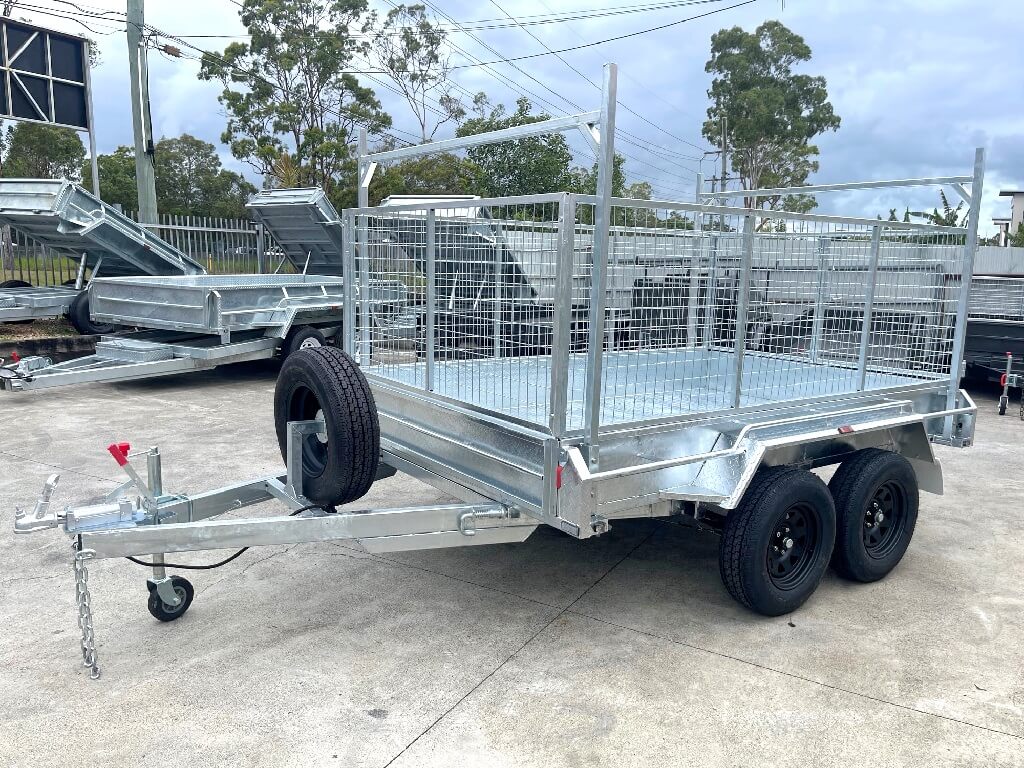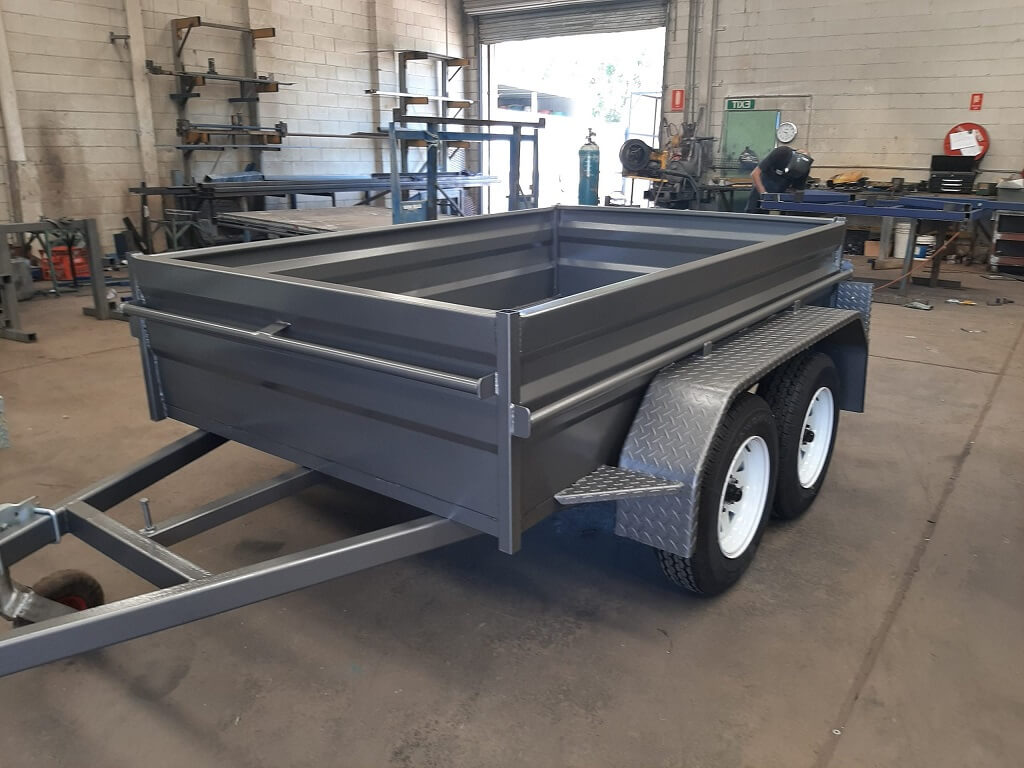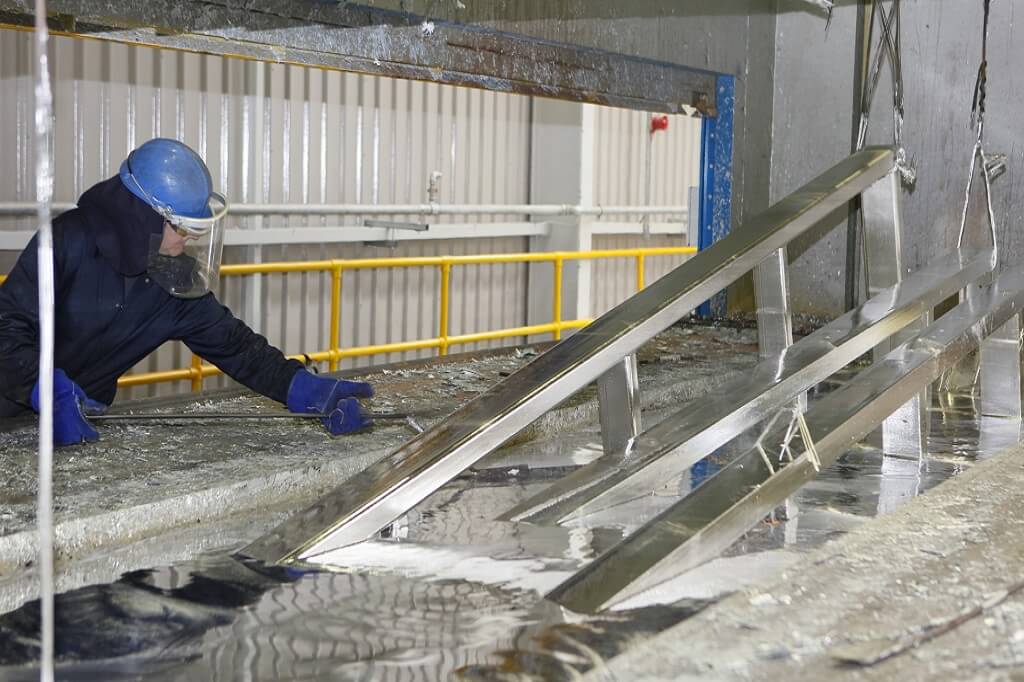When selecting a steel trailer, one of the critical decisions revolves around its surface treatment – specifically, whether to opt for hot-dip galvanizing or painting. This choice significantly impacts the trailer’s durability, maintenance, cost, and suitability for specific environments.
This article delves into the differences between hot-dip galvanized and painted steel trailers, offering insights to guide your decision.
Hot-Dip Galvanized Steel Trailers

- Process: Hot-dip galvanizing involves submerging steel components in a bath of molten zinc. This process creates a robust, multi-layered zinc-iron alloy coating that is highly resistant to corrosion.
- Durability: The galvanized coating offers superior protection against rust and corrosion compared to painted surfaces. It’s especially beneficial in harsh environments, such as those with high humidity, salty air near coastal areas, or exposure to road salts in cold climates.
- Maintenance: Galvanized trailers typically require less maintenance. The zinc coating can self-heal minor scratches, thus protecting the steel beneath. However, if the coating is damaged significantly, professional repair may be necessary.
- Cost: Initially, hot-dip galvanized trailers are more expensive due to the cost of the galvanizing process. However, the reduced maintenance expenses and extended lifespan can balance out the initial costs.
- Aesthetics: The appearance of a custom galvanized trailer is distinct, with a bright, shiny surface that dulls to a matte gray over time. While some find this industrial look appealing, it may not satisfy those desiring a specific color or a more polished appearance.
Painted Steel Trailers

- Process: Painting involves applying primer and paint layers to the steel surface. This method offers a wide range of colors and finishes, enabling customization for visual preferences.
- Durability: While high-quality paints can offer good protection against rust and corrosion, they generally do not match the longevity and resilience of a galvanized coating. Painted surfaces are more susceptible to chipping, scratching, and fading, especially when exposed to harsh environmental conditions.
- Maintenance: Painted trailers may require more frequent maintenance, including touch-ups to the paint job to prevent rust. Frequent checks are essential to spot and fix any paint damage that reveals the underlying steel.
- Cost: The initial cost of a painted trailer is usually lower than that of a galvanized one. However, the potential for higher maintenance costs and a shorter lifespan can affect the overall value.
- Aesthetics: Painting offers a wide variety of colors, allowing for personalization and branding that galvanized trailers cannot match. This flexibility makes painted trailers popular for businesses or individuals who prioritize appearance.
Which One You Should Choose?
The decision between hot-dip galvanized and painted steel trailers depends on several factors:
- Environmental Exposure: For harsh conditions, galvanizing offers better protection.
- Budget Constraints: If initial cost is a concern, painted may be more accessible, but consider long-term expenses.
- Aesthetic Preferences: For those valuing customization, painted trailers offer more options.
- Maintenance Willingness: If minimizing upkeep is a priority, galvanized trailers are advantageous.
Conclusion
Both hot-dip galvanized and painted steel trailers have their pros and cons. By understanding the differences, you can select a trailer that best suits your requirements, ensuring durability, functionality, and satisfaction over its lifespan.
